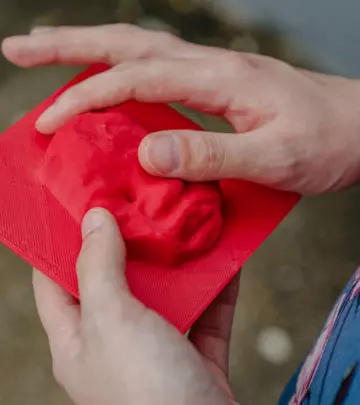
Pregnancy is one of the most joyous phases of a woman’s life, with many surreal moments such as experiencing the first baby kicks or the first ultrasound image. Parents-to-be cherish these moments as it makes the journey all too real. For a mother, seeing her baby’s face can be one of the most memorable experiences of her life, paving way for a great bonding experience. But visually impaired parents are robbed of this experience. Until now.
Thanks to the advancement in technology, 3-D printing technology allow visually impaired parents to share the experience of seeing their baby before they are born.
Taylor Ellis, 26, a blind woman who lives in Cockeysville had an emotional moment when she first got to feel her baby’s face which was created through 3-D printing. A 3-D bas-relief model was sent to her address via mail. Taylor revealed that she was nervous while opening the mail as she had never seen a 3-D image before (1).
The idea behind 3-D printing of fetuses was originally aimed to help unborn babies with the neural tube defect, spina bifida. Jena Miller, an obstetrician and surgeon at John Hopkins Hospital realized that a 3-D print of the baby’s spine would help her get a clearer image to decide if a baby needs surgery in utero for spina bifida.
Some research hospitals have long used 3-D printing technology to create models of fetal hearts and prosthetics to help unborn babies. However, the idea to create 3-D models for visually impaired parents was first put forward by one of the sonographers at John Hopkins Hospital.
When they were doing a scan for a visually impaired mother, a sonographer asked Jena if it is something they can do. The team then tried getting a good image of the face since they can only focus on one part, so a full-body scan wasn’t possible.
Ellis is a visually impaired mom of two kids, ages 5 and 3. Her husband, Jeremy is also visually impaired. Ellis had some vision when she was pregnant with her two daughters but her glaucoma got worse which made it hard for them to share the experience of their baby’s first ultrasound. Ellis describes the experience of 3-D printing as super-real since she got to experience everything with much more detail, like when she was pregnant with her first daughter. Ellis says that the ultrasound can be confusing and frustrating even for sighted parents since technicians may not be able to give them all the information they need (2).
Melissa Riccobono, president of the Maryland Parents of Blind Children believes that 3-D printing can be an exciting new possibility for blind parents. Her husband, the president of the National Federation of the Blind, and she are both visually impaired. They are parents to 3 kids, 2 of whom are blind. When Melissa was pregnant with her first child, the technicians were able to get her what she now calls a 2.5-dimensional print, with the image slightly rising from the page. Melissa reveals that she felt a bit sad since she couldn’t see the ultrasound image like other parents. Because of 3-D printing, parents will now be able to meet the little one growing inside the womb before they are born.
For Ellis, who is pregnant with her third child, 3-D printing means she would get the opportunity to check if the baby got her nose or her husband’s.
For visually impaired parents, 3-D printing will be a really cool experience since expectant parents would get the opportunity to actually feel them with their hands, instead of just seeing their little one. It will be a unique experience that every expectant parent will enjoy, whether they are blind or not.













